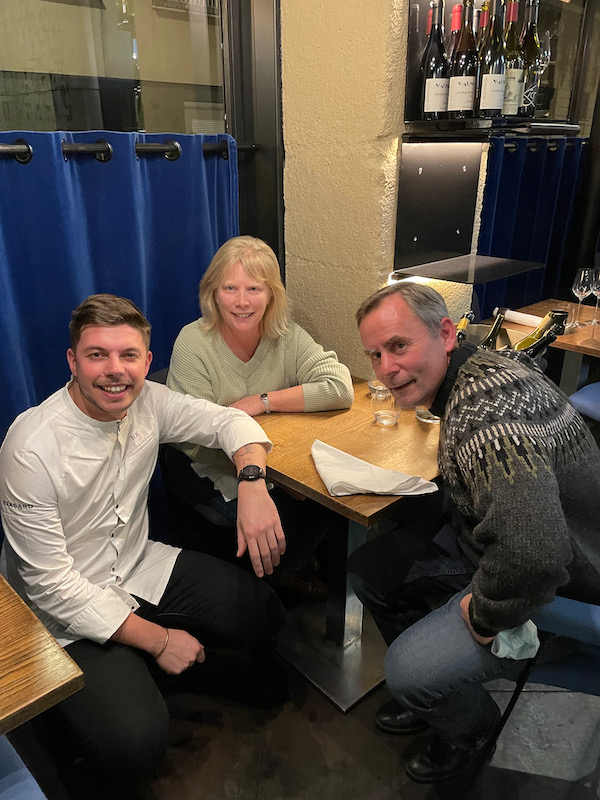Our Blog - Paris 2022 Day 1
We decided to take a 4-night trip to Paris (without Lucy, who stayed in Toulouse with her Aunt Lisa). We lived in Paris for almost 3 years and have visited multiple times, so this was not a normal "tourist" trip to Paris. We tried to stay off the beaten path in addition to taking a couple of walking tours with Paris Walks. I don't always take pictures of the places that we stay at, but this one warranted a little discussion. It is a B&B right in the heart of Paris, literally steps from a metro station. Wonderful old wood floors, antique furniture, and amazing moldings, but with all of the modern comforts that you would want. We stayed in the Guimet Bedroom at the My Home for You B&B, which we highly recommend for any of you coming to Paris.


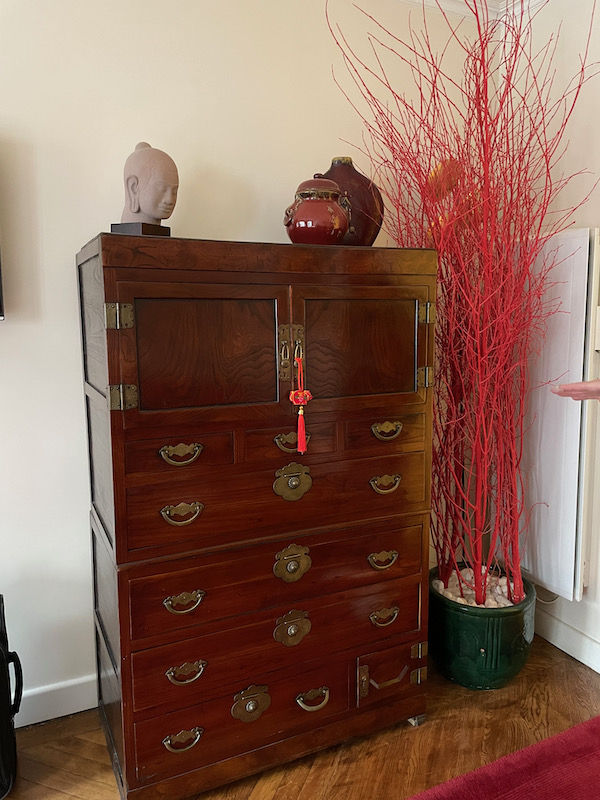
Part of the trip was taken up with eating! I had found a list of the best macarons, the best croissant, and the best pain-au-chocolat (similar to a croissant but with chocolate inside). We mapped a few of them out that were convenient to other things were were doing, and off we went. First stop was for macarons .... a wonderful afternoon snack.

Then a walk past the Opera Garnier, the older opera house in Paris (the other is near Bastille). They were doing some work on it so there was a little bit of scaffolding, but the front looked wonderful ... look at those shiny gold statues on top! And another view from the side.
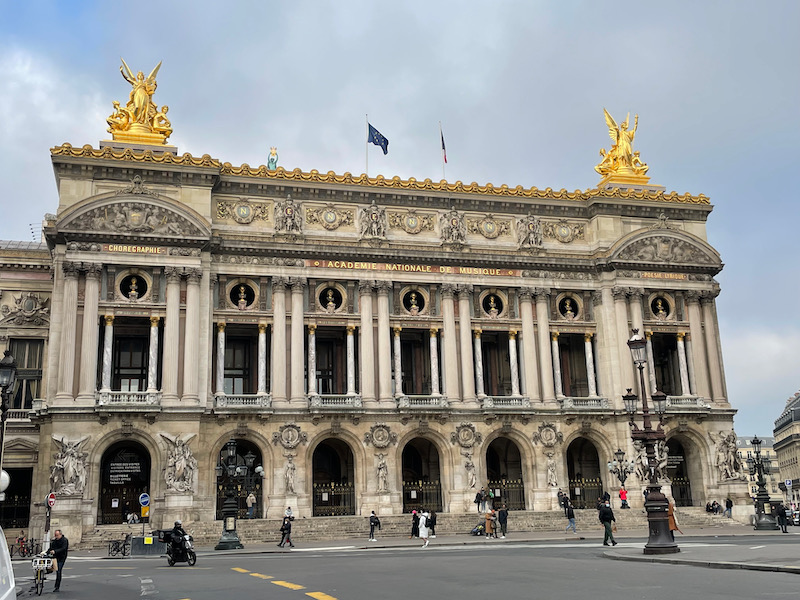
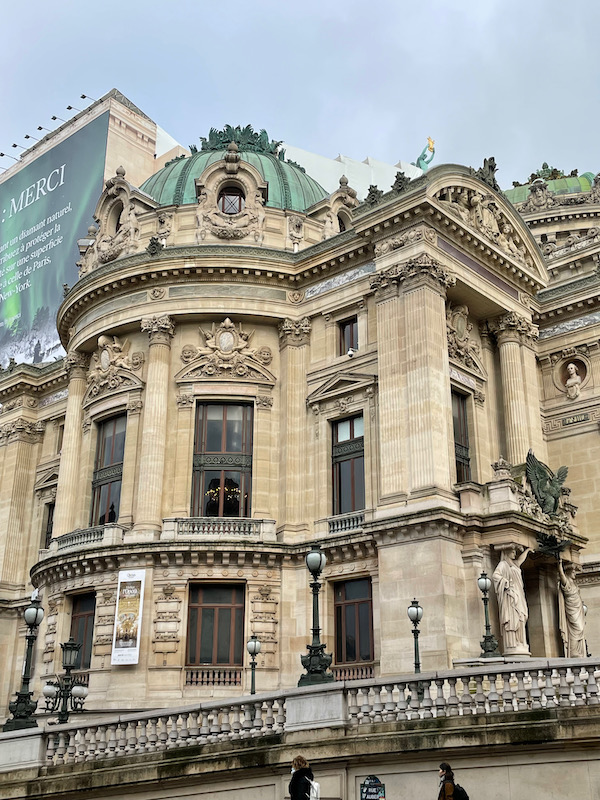
The department store Galeries Lafayette was next, but not for any shopping. We have the same store in Toulouse, but this one has a lovely center cupola. The original store was opened in 1894 and expanded in 1905 when it acquired 3 additional buildings. The dome was added in 1912. The interior decoration is Paris Art Nouveau style. The dome is 43 meters tall and has neo-Byzantine style stained glass windows. There is now a roof-top terrace as well.

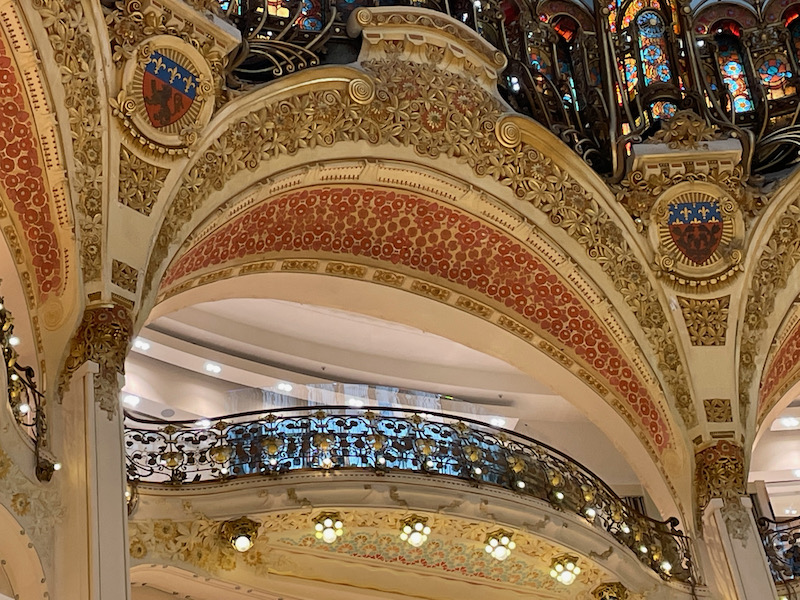

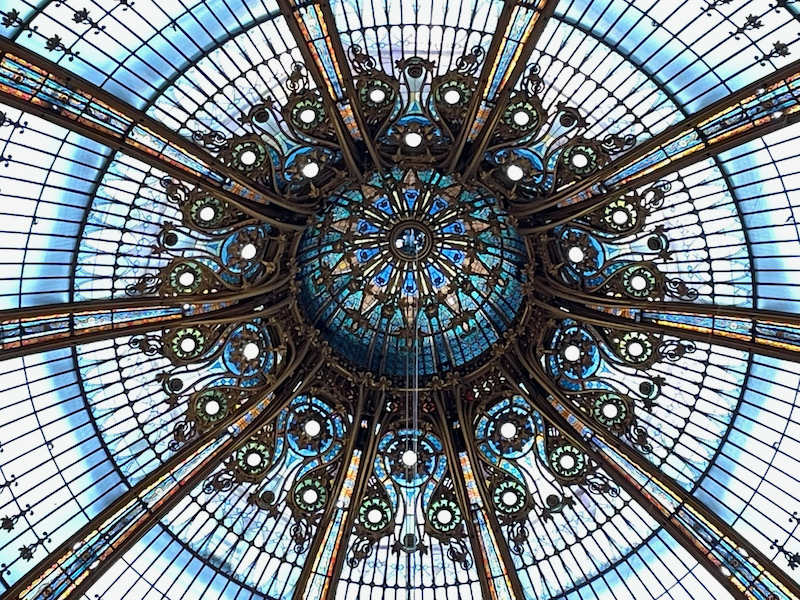
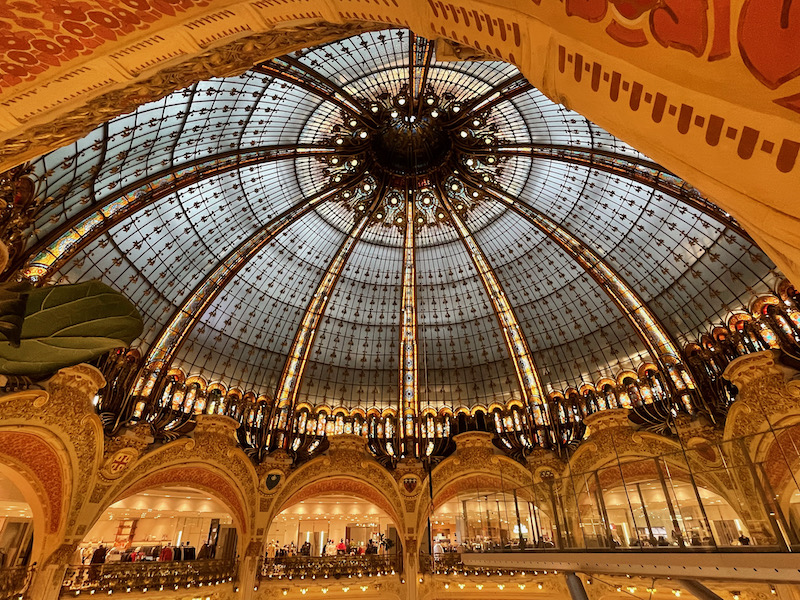
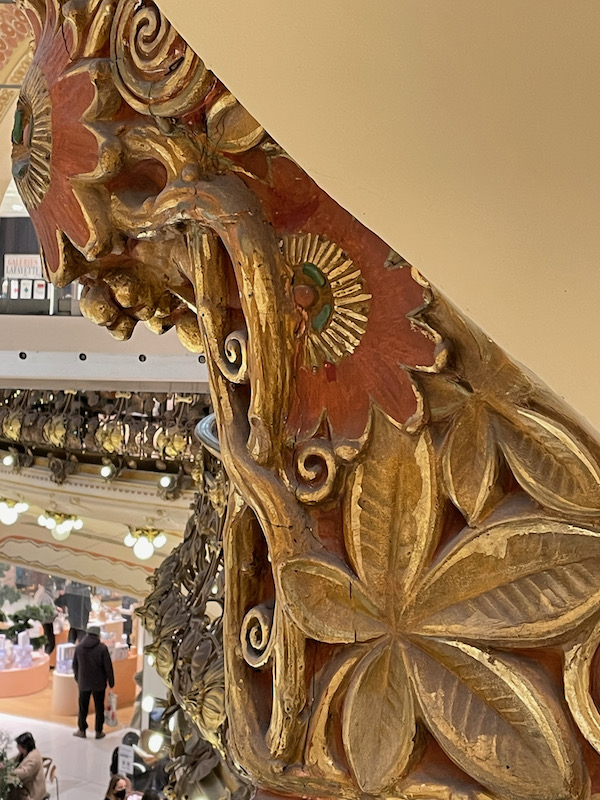
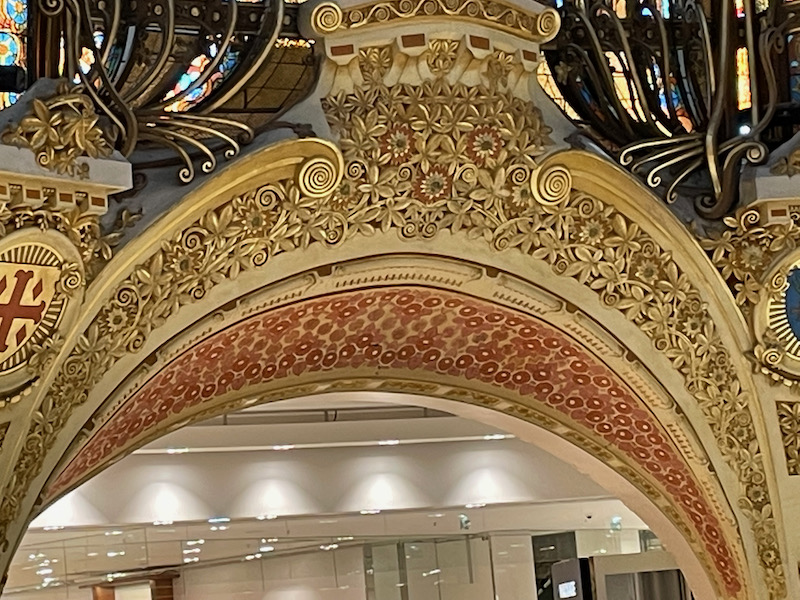
Here we have a view of the back-side of the Opera from the roof-top terrace. In the 2nd picture, you can see the Eiffel Tower as well as the Grand Palais (the flag and glass roof in the middle). The 3rd picture has the gold dome of Invalides in the middle and then the 4th picture shows the Sacré-Cœur basilica up on the hill.
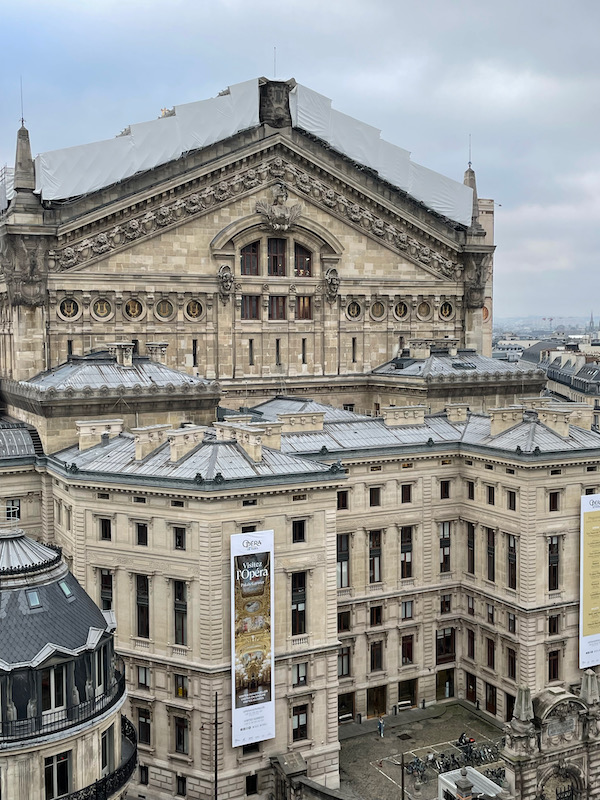
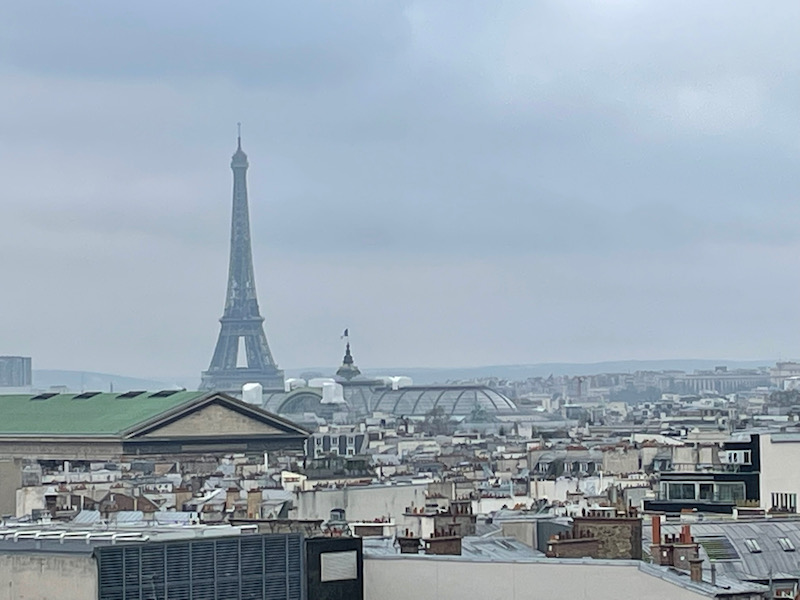
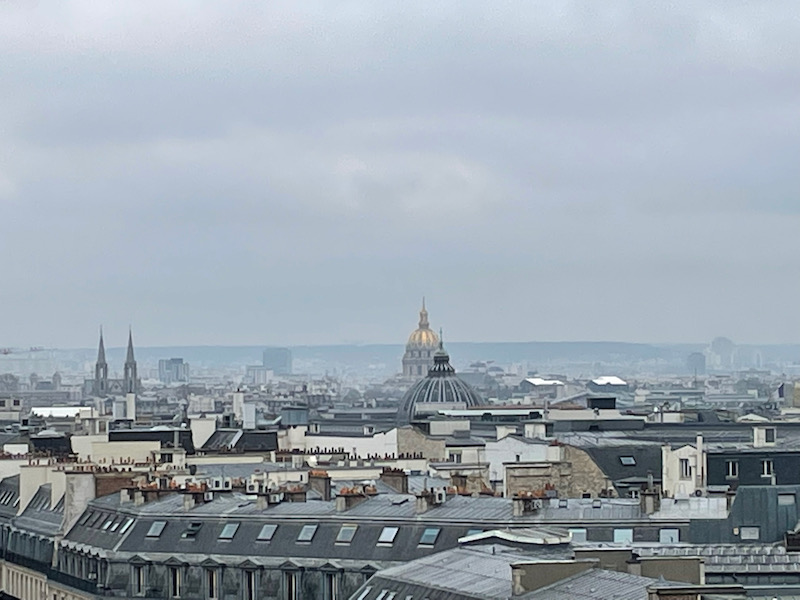
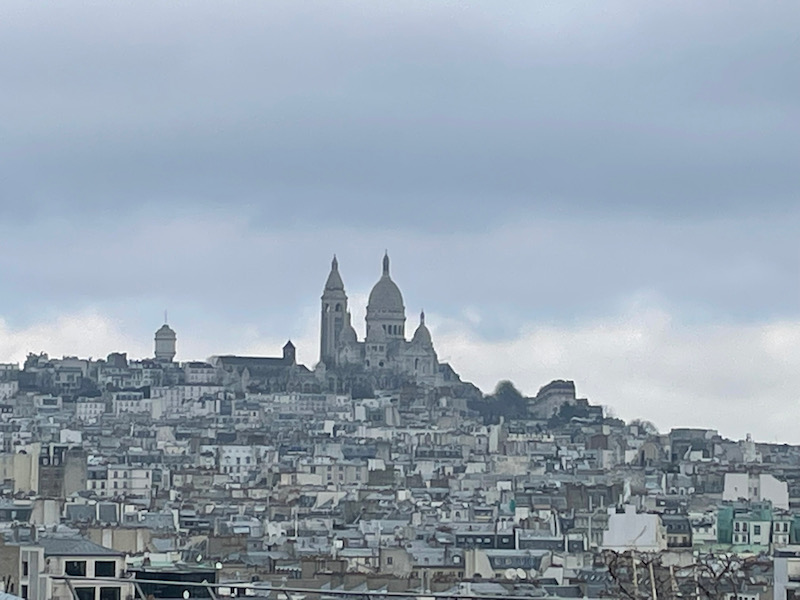
You'll see a set of covered arcades that we visited this trip on various days. Built for the most part in the 19th century by putting a hole through the buildings, most of the arcades are covered with glass roofs and are a typically Parisian architectural feature. There are around 20 of them in Paris, mainly with shops, tearooms and restaurants. The first one today was the Passage Jouffroy. Built in 1836 and renovated in 1987, it has been one of the most visited covered arcades in the city. It has a lovely iron and glass architecture and marble paving, and some unique tenants. There is the Musée Grévin (famous for its waxwork models), stores that sell old canes and walking sticks, old books, and antiques.
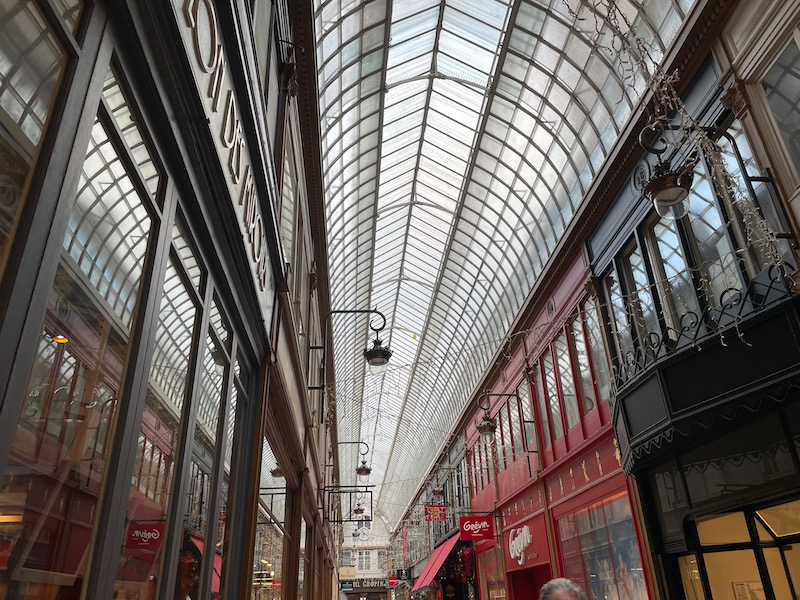


Across the street to the Passage Verdeau, built in 1847. There are a number of antiques dealers and art galleries here.
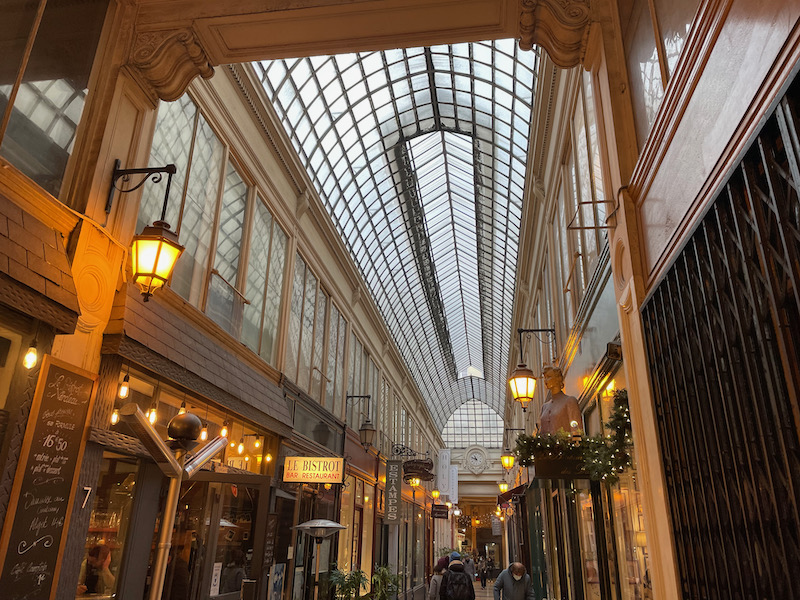
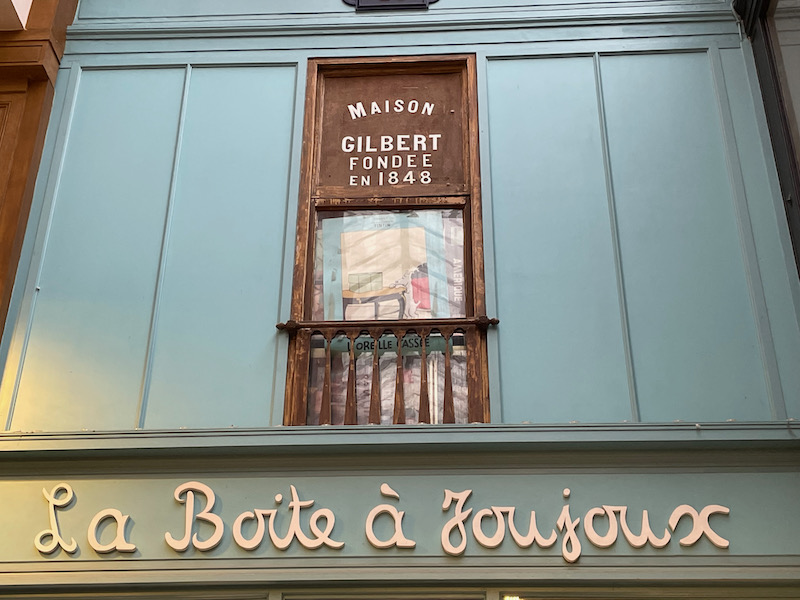
The Passage des Panoramas continues this set of covered arcades through the next block.
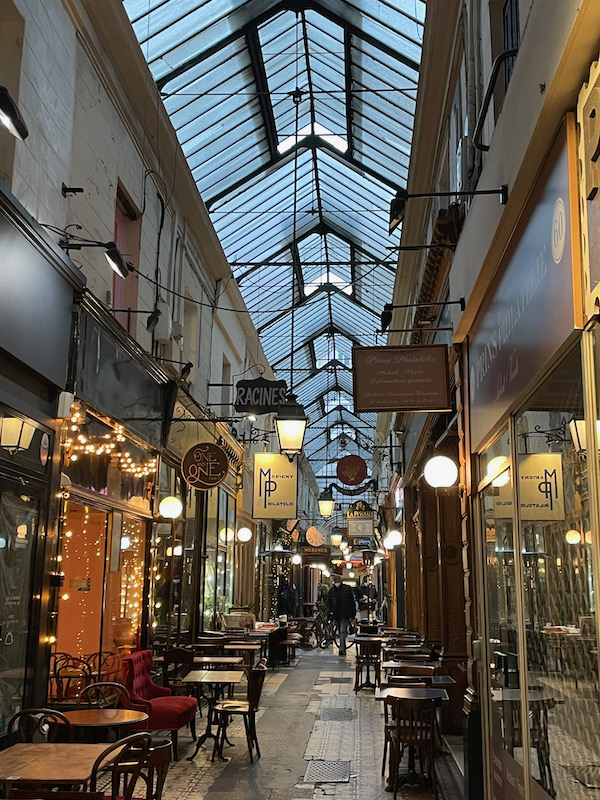
The current Eglise Saint Eustache building was built between 1532 and 1632. It is in the heart of Paris, near the site of Paris' medieval marketplace Les Halles (now a shopping center). It has a mixture of multiple architectural styles: its exterior is flamboyant Gothic while its interior decoration and other details are Renaissance and classical.

The church is relatively short in length, but the interior vaulting is quite high. You can see some Flamboyant Gothic elements inside, like the high vaulted ceilings decorated with a network of ornamental ribs, and hanging keystones. Below them are the Renaissance elements, in the form of pillars and pilasters representing the classical orders of architecture, rounded arcades, and walls covered with elaborate decorative sculpture.
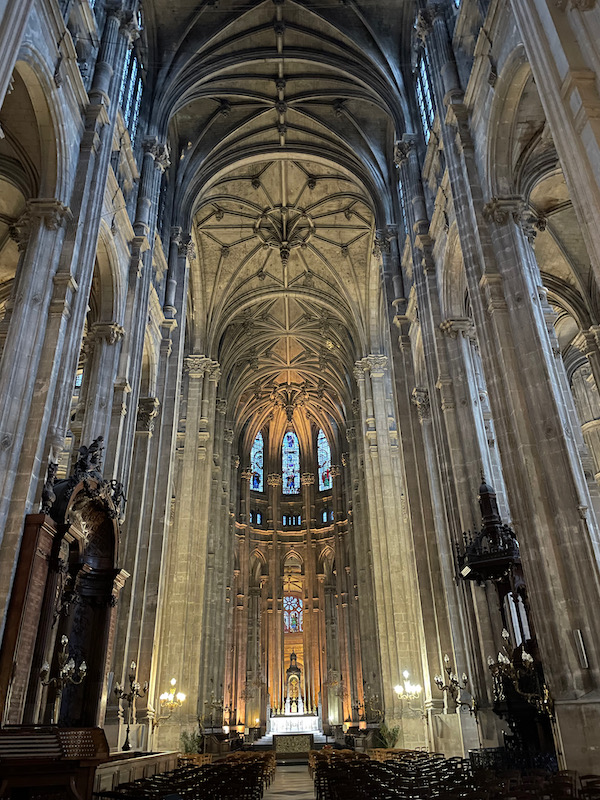
They have been doing renovations and so not all of the church was open. But you can see where in some of the pictures where the pillars that hold the vaulted ceilings are shiny and colorful.
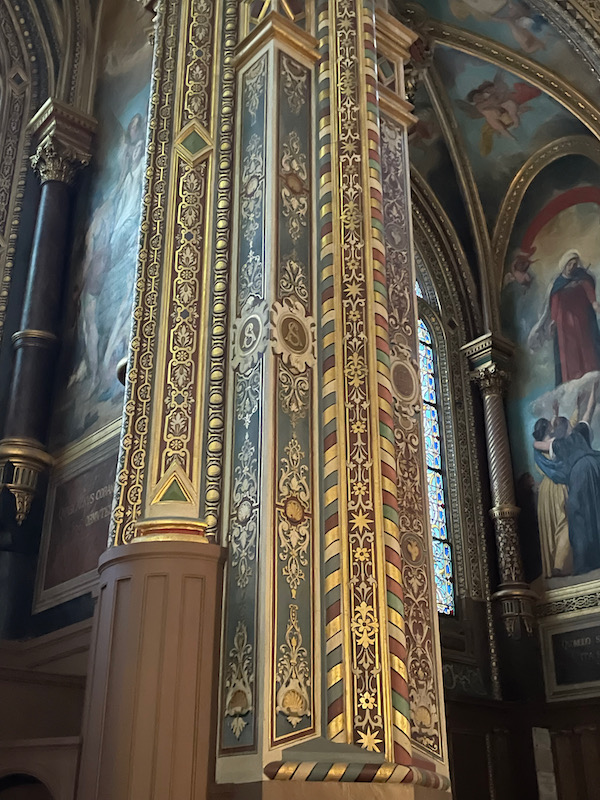
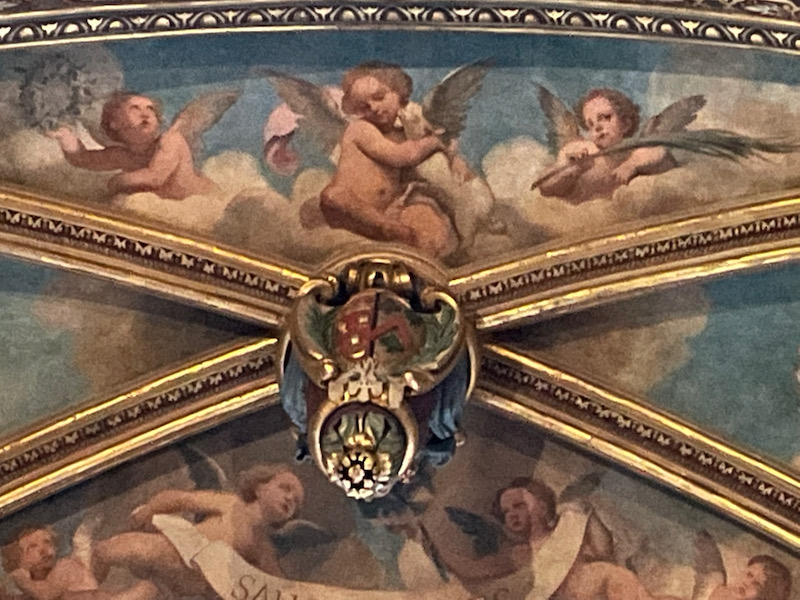
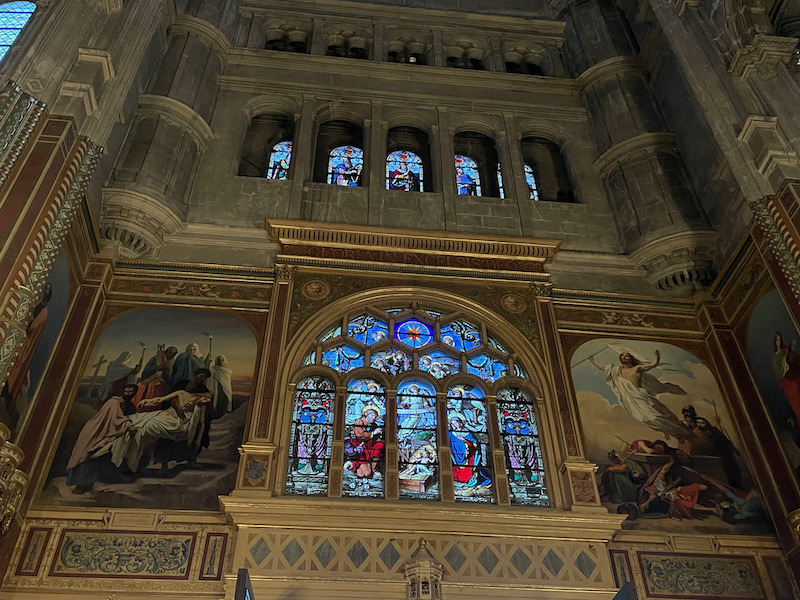

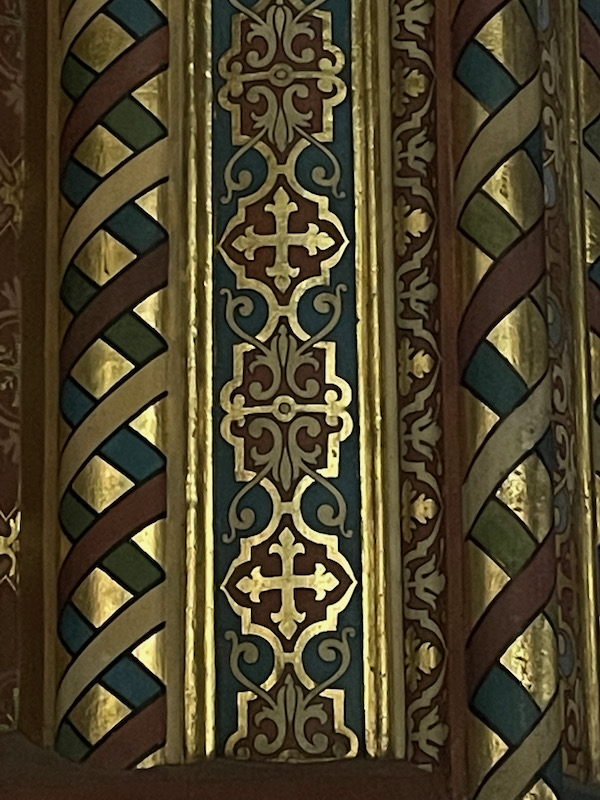
One of the notable classical features of the nave is the "Banc-oeuvre", a group of seats covered by a Grecian portico and very ornate carvings. It was the seating reserved for the members of the lay committee which oversaw the finances of the church. It was made in 1720 and is crowned by a statue representing "The Triumph of Saint Agnes".
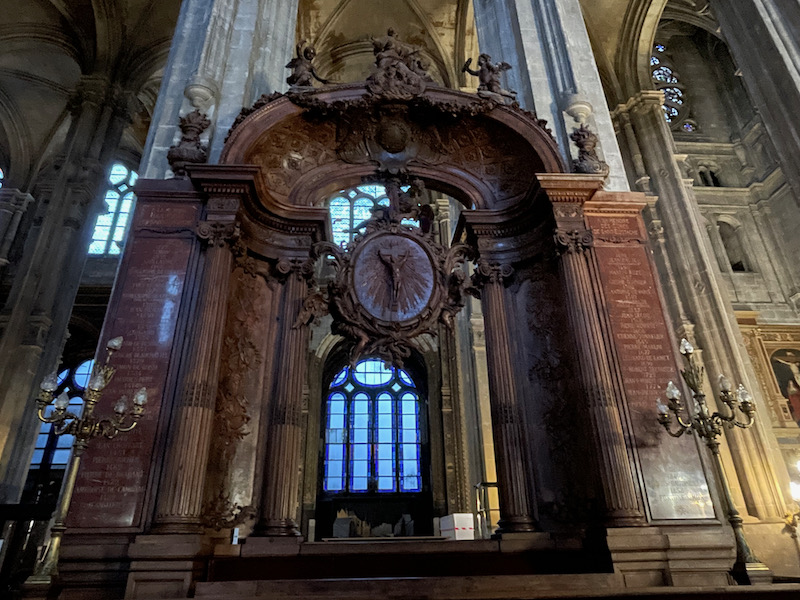
There really aren't true 'transepts' here, but above the side entrances are rose windows. This is the north entrance and the rose window is from the 19th century.
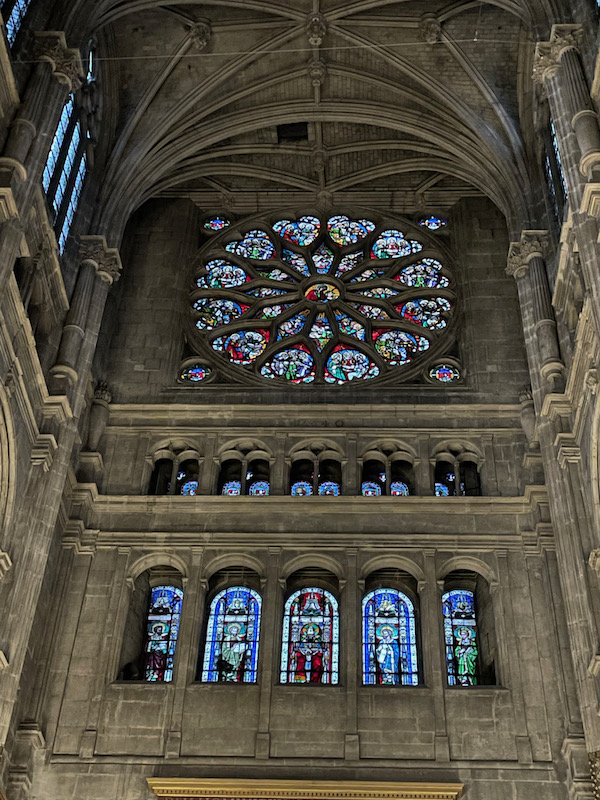
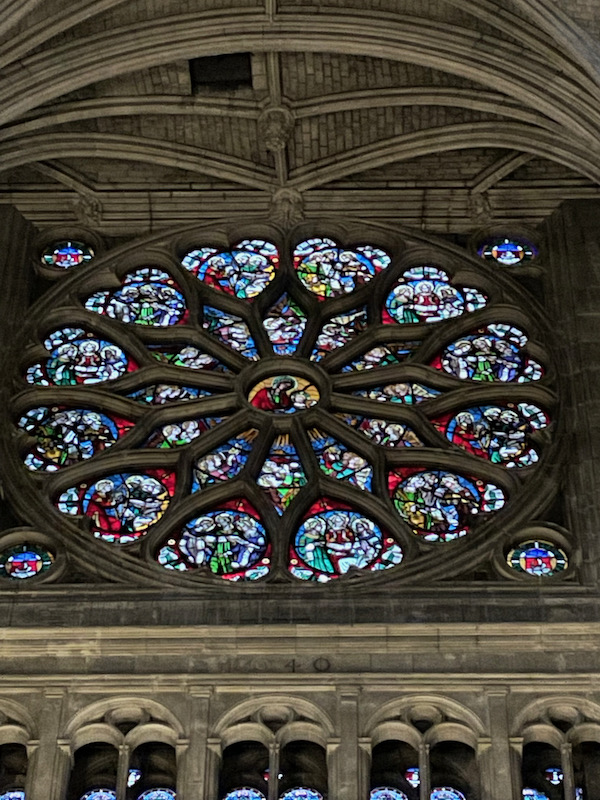
Not as elaborate as some that I have seen, but the carved wooden choir stalls were still pretty nice.

The earliest stained glass windows here date from the 17th century and are mostly in the choir. What I have pictures of are mainly from the 19th and 20th centuries.
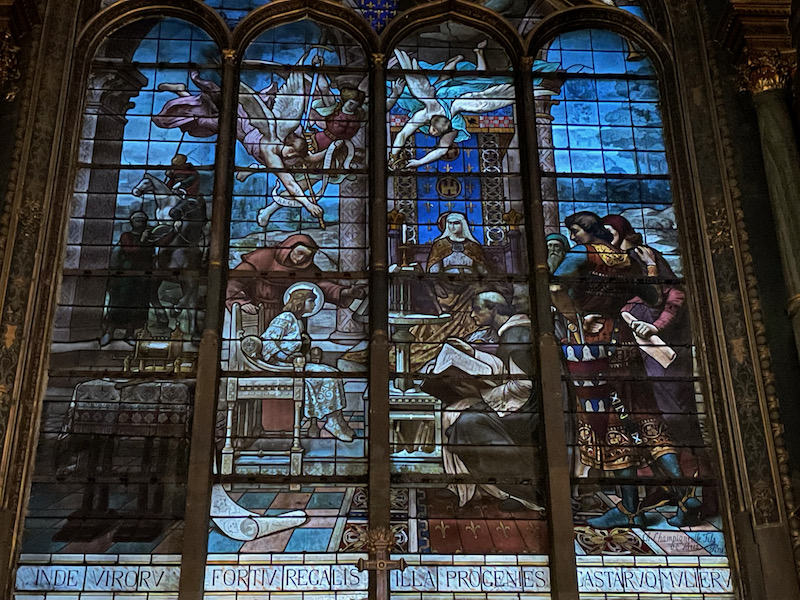

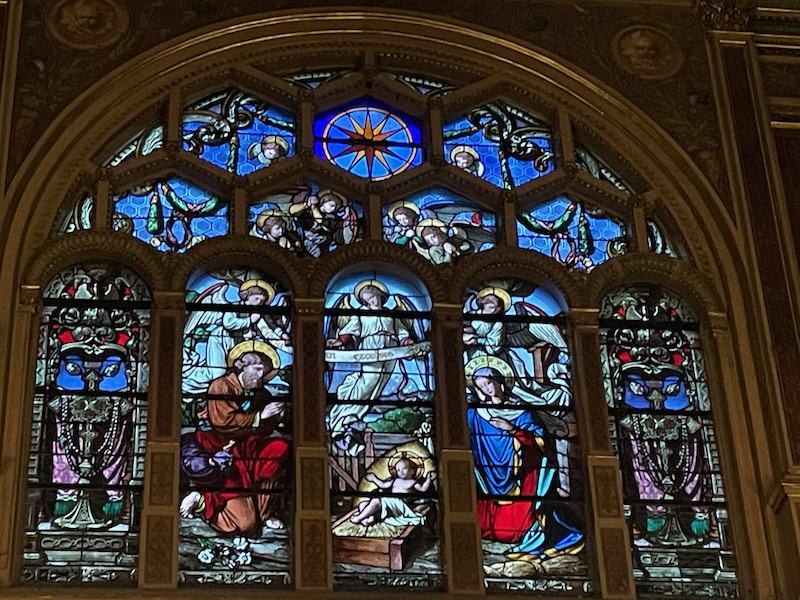

The Chapel of the Virgin, located behind the choir in the apse at the east of the church, was built in 1640 and restored from 1801 to 1804. There are 3 paintings done by Thomas Couture in the 19th century which all show scenes of the Virgin Mary. The one pictured is the center panel, "The triumphant Virgin adored by angels"
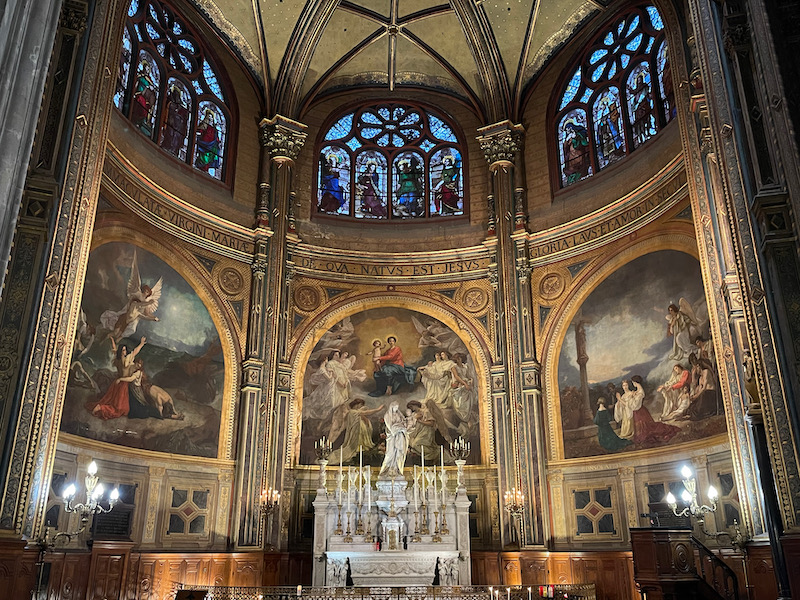
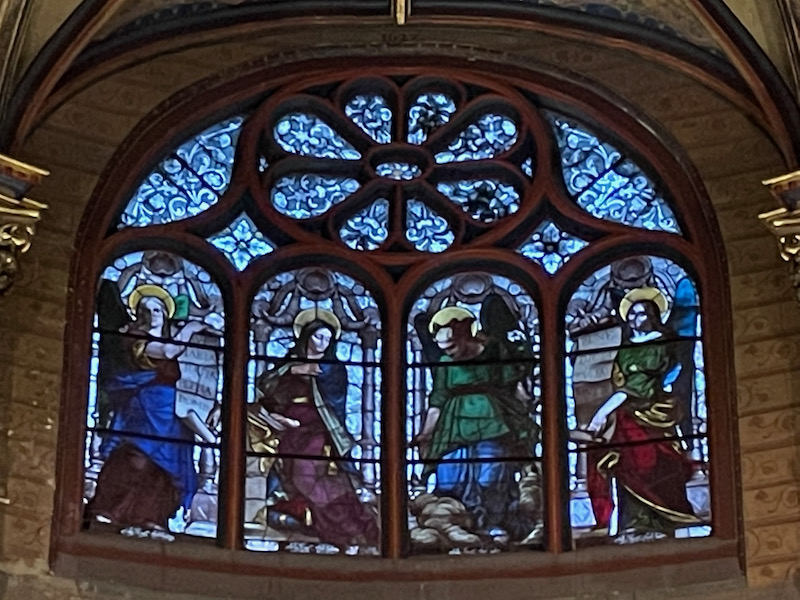
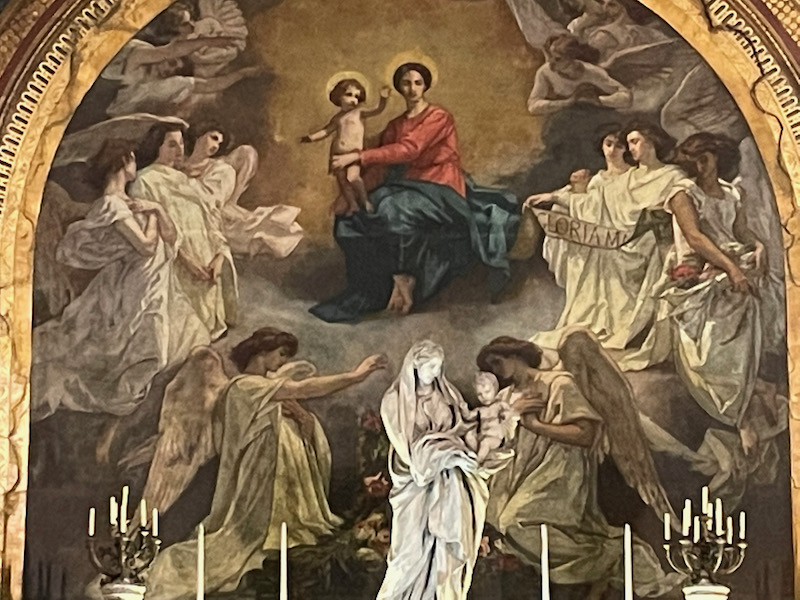
Les Halles (translates to The Halls) was the central fresh food market in Paris until it was demolished in 1971 when the markets were moved to the outskirts. Émile Zola called it the "Belly of Paris" in his novel "Le Ventre de Paris", which is set in the busy marketplace of the 19th century. Two of the glass and cast iron market pavilions were dismantled and re-erected elsewhere; one in the Paris suburb of Nogent-sur-Marne, the other in Yokohama, Japan. An underground mall was built there (which was there when we lived in Paris) and it has now been reconstructed and a huge canopy was added in 2016.

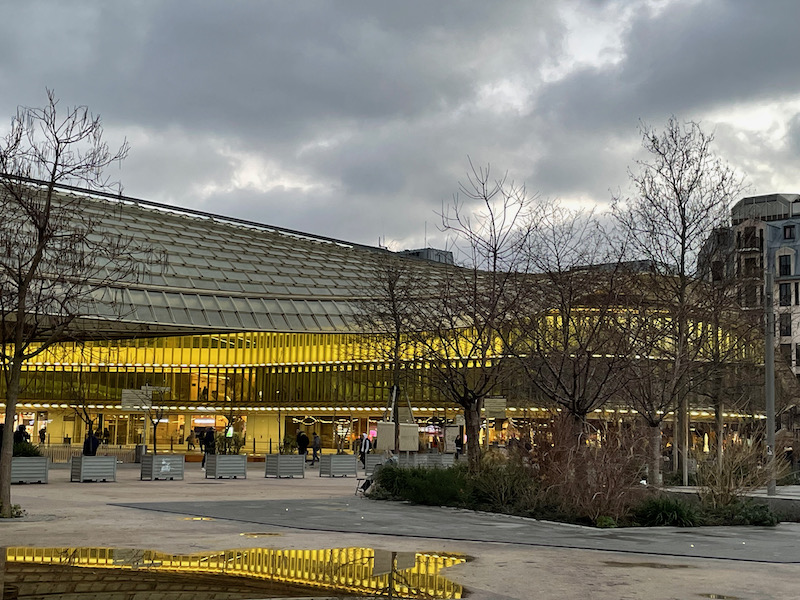
Top Chef is a reality TV show here in France that was adapted from the American Top Chef. Several professional chefs compete and are judged, normally with one going home each episode. They are split into 4 teams, each headed by a famous chef (all Michelin-starred chefs). Some other Michelin-starred chefs have participated as guest judges or have taken over as the team leader for an episode. This is not your typical cooking contest ... many of the contestants have gone on to earn a Michelin star after competing. We have watched it for several years now and it helps us work on our French! In Season 9, chef Franck-elie Laloum, who I took cooking classes from when we lived in Shanghai, competed (he didn't win). We looked up the candidates from the latest season, and several of them have restaurants in Paris. We picked a couple of them where they were the main Chef and made reservations. Our first night, it was at a restaurant called Substance with the chef Matthias Marc.
I tried to make notes of what each course was .... dinner started with an amuse bouche with 3 different things. There were a couple black squares (on top of the rocks) that were a fish coated with charbon vegetale (Activated Charcoal powder) and topped with a dollop of black garlic and sprinkled with Piment d'Espelette. In the same bowl was some straw with a crisp tuile made with black squid ink, drizzled with smoked cream that had been smoked with the same type of hay. Then on another plate were two round crisp crackers with butternut squash pickles topped by several types of cheese.
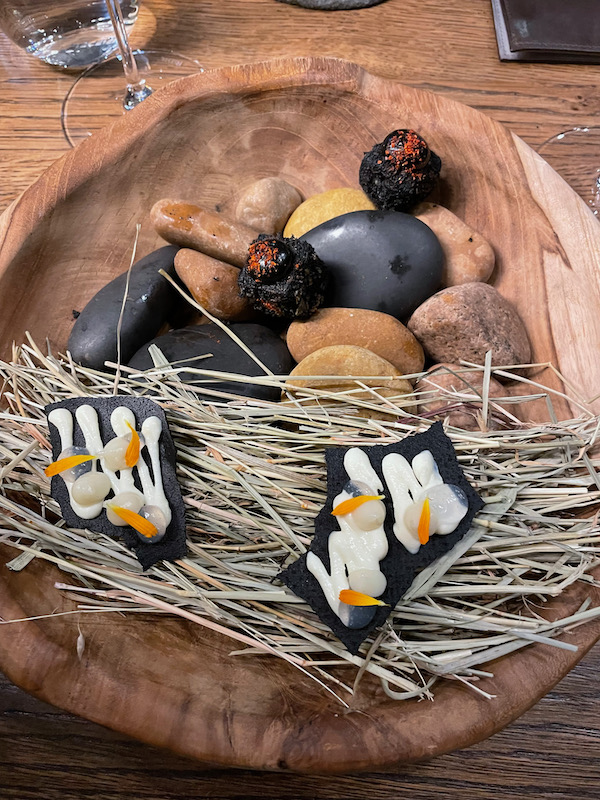
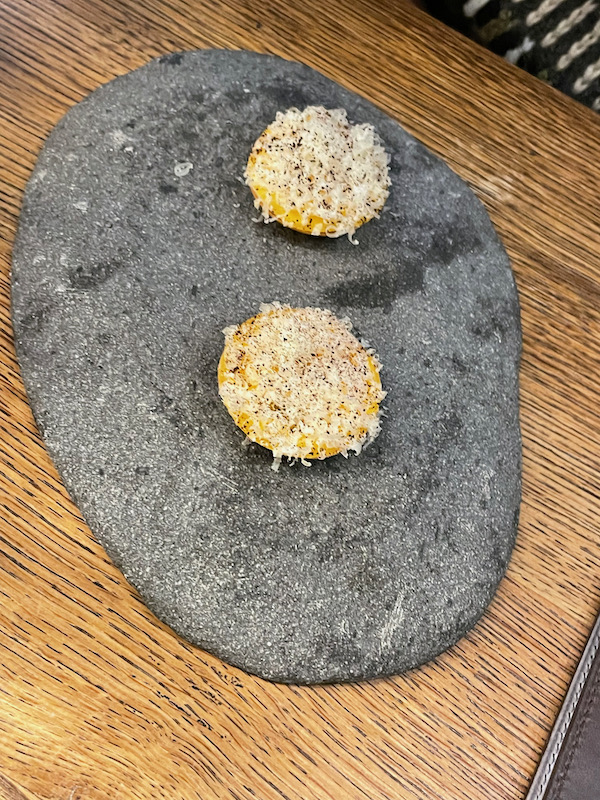
The 1st course is a cream of potatoes and cancoillotte (a type of cheese from the Jura department where the chef is originally from) topped with trout eggs.

This is a poached oyster with fresh cream, surrounded by julienned beets topped by a little spoon of beet sorbet.
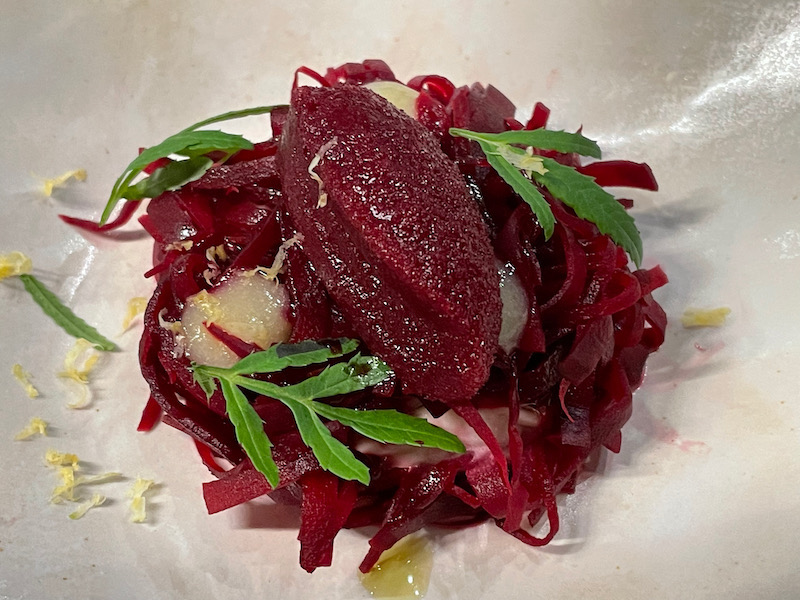
Then we started the warm dishes, the first one being gnocchi made of activated charcoal (again) and watercress, topped with paper-thin slices of turnips and served with green onions and cubs of morteau sausage.

This pretty plate contains 3 scallops with spinach and basil, and then two different sauces that included scallop juice, lemongrass, and ginger.

Now when I see those silly Facebook polls about what weird foods you have eaten, I can add another point to my total ... ris-de-veau, or veal sweetbreads. It sounds yummy (and some people really like it), but I can't get past the act that it is a gland called the thymus. I am not sure why, but this fairly rare food is still expensive and highly prized by connoisseurs.

The first of two desserts was an orange sorbet drizzled with a sauce made of sea urchin, a couple different creams underneath, with lacy tuiles made of chestnuts. The second had two pieces of baked apple with a sweet clover ice cream and a sauce made with yellow wine. It also had slivers of apple on top of whipped cream. We finished with some petits-fours and coffee.
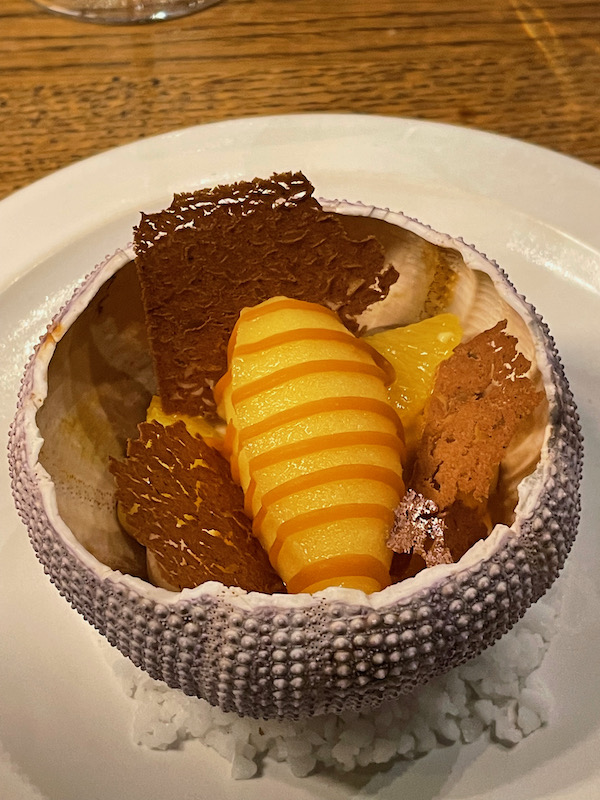
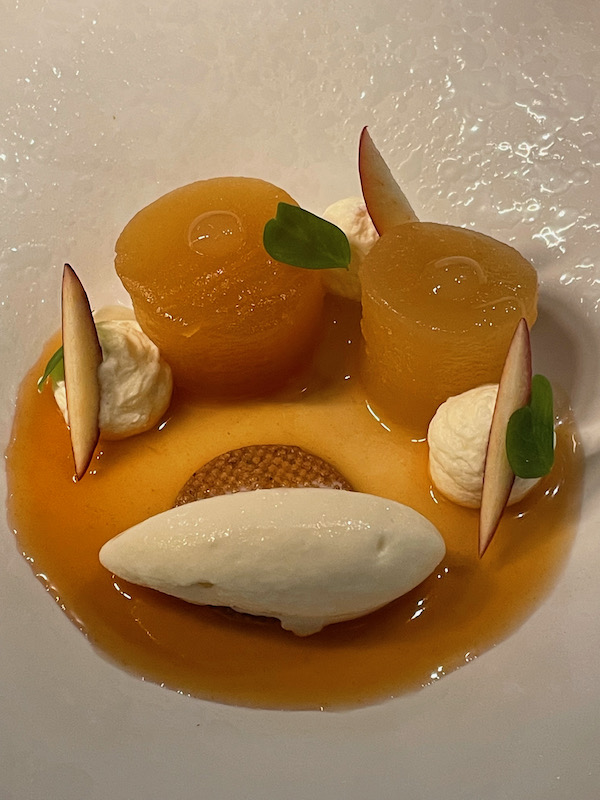
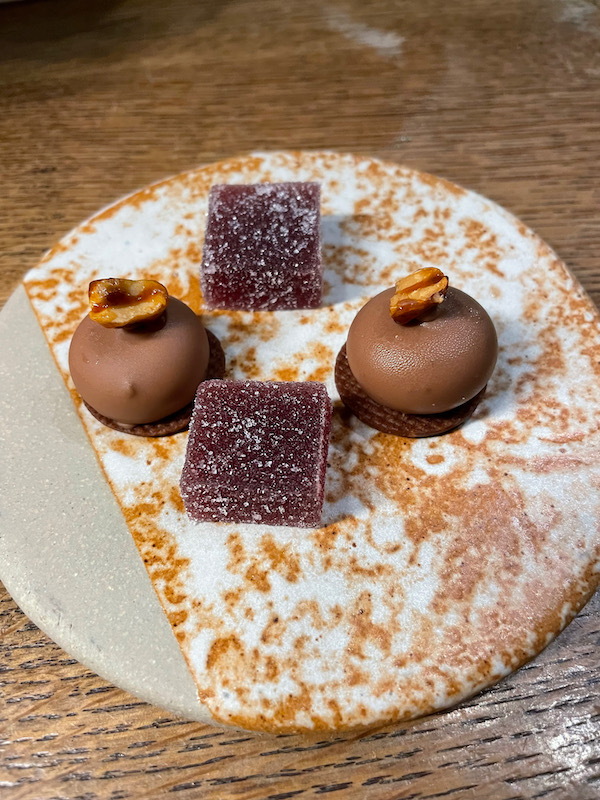
Luckily enough, we got to meet him at the end of the meal as he came around to talk to the various tables, and we got a photo with him! He was much more photogenic than we were!
